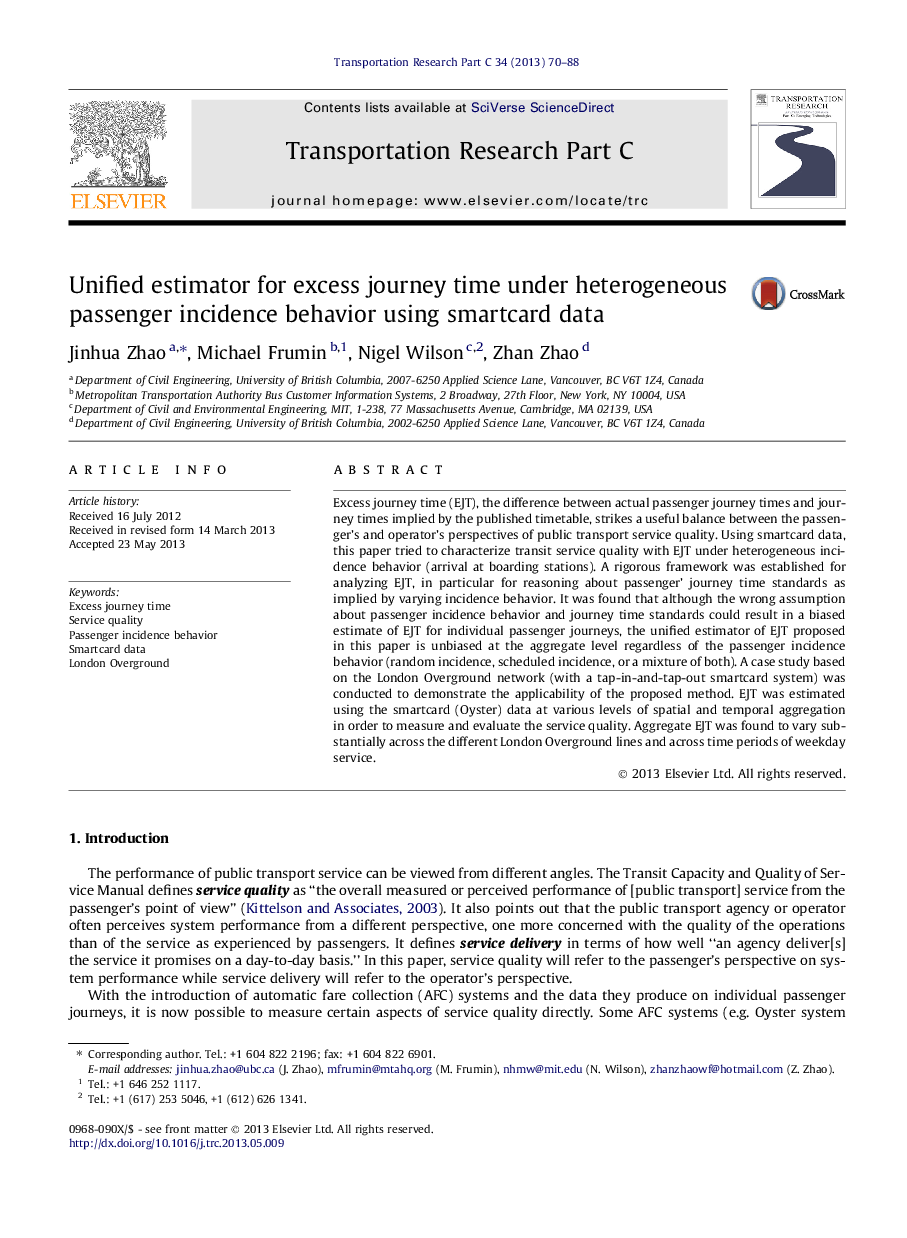| Article ID | Journal | Published Year | Pages | File Type |
|---|---|---|---|---|
| 525150 | Transportation Research Part C: Emerging Technologies | 2013 | 19 Pages |
•A unified estimator for aggregate excess journey time in any incidence behavior.•The proposed estimator was applied to London Overground using Oyster smartcard data.•Significant variations in EJT between lines and time periods were observed.
Excess journey time (EJT), the difference between actual passenger journey times and journey times implied by the published timetable, strikes a useful balance between the passenger’s and operator’s perspectives of public transport service quality. Using smartcard data, this paper tried to characterize transit service quality with EJT under heterogeneous incidence behavior (arrival at boarding stations). A rigorous framework was established for analyzing EJT, in particular for reasoning about passenger’ journey time standards as implied by varying incidence behavior. It was found that although the wrong assumption about passenger incidence behavior and journey time standards could result in a biased estimate of EJT for individual passenger journeys, the unified estimator of EJT proposed in this paper is unbiased at the aggregate level regardless of the passenger incidence behavior (random incidence, scheduled incidence, or a mixture of both). A case study based on the London Overground network (with a tap-in-and-tap-out smartcard system) was conducted to demonstrate the applicability of the proposed method. EJT was estimated using the smartcard (Oyster) data at various levels of spatial and temporal aggregation in order to measure and evaluate the service quality. Aggregate EJT was found to vary substantially across the different London Overground lines and across time periods of weekday service.
